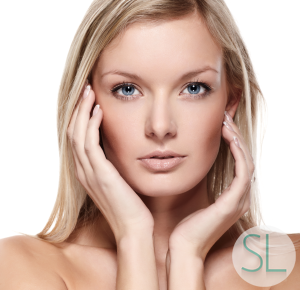Genes and geography Caucasian complexions come in a variety of colors, from ivory to golden beige to olive. Skin color is rooted in our genes, which usually reflect distinct geographical areas of the world where our ancestry originated. Fair-skinned Caucasians... Continue Reading →
Genes and geography
Caucasian complexions come in a variety of colors, from ivory to golden beige to olive. Skin color is rooted in our genes, which usually reflect distinct geographical areas of the world where our ancestry originated. Fair-skinned Caucasians may come from northern or eastern European countries while olive-skinned Caucasians can be traced to Mediterranean regions like Italy or Greece. However, nowadays, many Caucasians are a genetic melting pot, with roots that span Europe and beyond.
Skin color
Generally speaking, some basic characteristics of Caucasian skin are:
- Fair tones. Fair skin
 tends to be thin, reactive and is highly vulnerable to sun damage and other environmental assaults. It burns easily and becomes red when irritated.
tends to be thin, reactive and is highly vulnerable to sun damage and other environmental assaults. It burns easily and becomes red when irritated. - Beige and olive tones. Darker skin tones are slightly thicker in texture, more likely to be oily and have acne, and can typically endure longer periods of sun exposure without burning. Also, Caucasians with olive undertones are likely to scar after cuts or other skin injuries.
Skin type: Dos and don’ts
While skin tone is important to consider, a good skincare routine should be based on your skin type. Here are some suggestions:
- Dry skin. Whether you have a fair or golden complexion, dry skin requires extra TLC. Of primary concern to dry skin types is climate. Notes Helen Foster in The Beauty Book, “Heating and cold temperatures are common causes (of dry skin),” and both can greatly aggravate the dry skin and cause a rapid breakdown in the skin’s ability to maintain moisture.
- Sensitive skin. It’s been estimated that up to 20 percent of women have sensitive skin, which tends to be itchy, flaky, sensitive to the touch and prone to allergic reactions. Caucasians with extremely fair skin or red hair are at increased risk for sensitivity.
- Oily skin. An oily complexion actually has several benefits: It ages slower and maintains moisture longer and better than dry skin. However, oily skin can also lead to aggravating skin concerns, including enlarged pores, excess shine, whiteheads, and blackheads.
Skin concerns
Figure out your prototype.  The Fitzpatrick Skin Type (or prototype) Scale classifies skin based on both color and how it reacts to the sun. While there are several possible types, Caucasian skin typically falls under one of the following categories:
The Fitzpatrick Skin Type (or prototype) Scale classifies skin based on both color and how it reacts to the sun. While there are several possible types, Caucasian skin typically falls under one of the following categories:
- Type I: Always burns and never tans
- Type II: Always burns but only tans sometimes
- Type III: Can sometimes burn but always tans
Sidestep skin cancer.
Caucasians have higher skin cancer rates than other ethnicities.
- Wearing a broad-spectrum sunscreen that blocks both UVA and UVB rays every day.
- Applying sunscreen 15 to 20 minutes before leaving the house — not when you’re already outside.
- Reapplying sunscreen every two hours or sooner if you’re swimming or sweating.
- Avoiding the sun at peak hours from 10 a.m. to 4 p.m.
- Seeking the shade.
- Putting on protective clothing, sunglasses and a wide-brimmed hat.
- Skipping sunbathing and tanning salons.
- Getting an annual skin evaluation by a dermatologist.
- Watching out for irregular moles.
Avoid early aging.
Unfortunately, Caucasians tend to show signs of photoaging (e.g., wrinkles, hyperpigmentation) earlier than other races. In fact, according to the Women’s Dermatologic Society, because the darker skin contains higher levels of melanin, it “may appear up to 10 years younger than that of a Caucasian the same age.”
If you need help looking more youthful, avoid the sun as said above, then stop by Satori Laser for an eTwo treatment.
Source:
 tends to be thin, reactive and is highly vulnerable to sun damage and other environmental assaults. It burns easily and becomes red when irritated.
tends to be thin, reactive and is highly vulnerable to sun damage and other environmental assaults. It burns easily and becomes red when irritated.